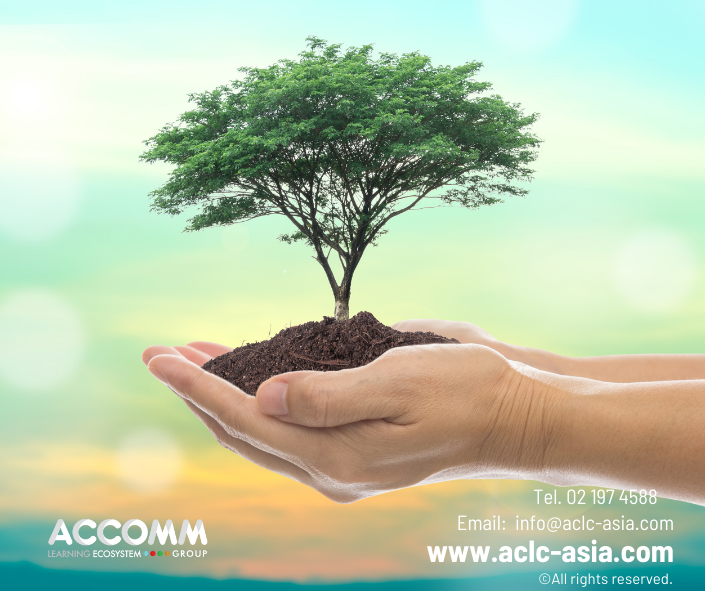Regenerative Leadership - Implication to Creating a Coaching & Mentoring Culture
- Atchara Juicharern, Ph.D.

- Sep 14, 2025
- 4 min read
Regenerative Leadership - Implication to Creating a Coaching & Mentoring Culture
บทความโดย ดร. อัจฉรา จุ้ยเจริญ
ในยุคที่ AI กำลังก้าวเข้ามาเป็นส่วนหนึ่งของห้องประชุมและกลยุทธ์ขององค์กร Patrick Lynch ได้ตั้งคำถามที่ท้าทายไว้ในบทความ “A Leadership Mindset Matrix for the AI Age: From Resilience to Regeneration” ว่า “Resilience เพียงอย่างเดียวไม่เพียงพอ”
(Source Credit: Patrick Lynch via Thinkers50 — “A Leadership Mindset Matrix for the AI Age: From Resilience to Regeneration” https://thinkers50.com/blog/a-leadership-mindset-matrix-for-the-ai-age-from-resilience-to-regeneration/)
Resilience หรือ การฟื้นคืน หมายถึงการ “เด้งกลับ” หลังเผชิญวิกฤต เพื่อให้ระบบกลับมาเป็นปกติอีกครั้ง รักษาความต่อเนื่อง และคงอยู่ให้ได้ ขณะที่ Regeneration หรือ การสร้างใหม่ คือการ “เด้งไปข้างหน้า” มันไม่ใช่เพียงการเอาตัวรอด แต่คือการก้าวข้ามไปสู่การสร้างคุณค่าใหม่ โมเดลธุรกิจใหม่ และความหมายใหม่ของการนำองค์กร
Lynch ได้อธิบายความแตกต่างนี้ผ่าน AI Leader Mindset Matrix ซึ่งใช้สองมิติเป็นตัวแบ่ง ได้แก่ เจตนาทางกลยุทธ์ ที่อาจอยู่ระหว่างการตั้งรับไปจนถึงเชิงรุก และ ขอบเขตของการมอง ที่อาจจำกัดอยู่แคบ ๆ หรือเปิดกว้าง เมื่อสองมิติถูกนำมาประกอบกัน จึงเกิดเป็นผู้นำสี่รูปแบบ
Resilient Recovery คือผู้นำที่ใช้ AI เพื่อแก้ปัญหาเฉพาะหน้า เช่น การใช้แชทบอทเพื่อรองรับข้อร้องเรียนลูกค้าในช่วงที่ศูนย์บริการล้นมือ
Resilient Preservation คือการนำ AI มาใช้ในหลายหน่วยงานเพื่อป้องกันความเสี่ยงและรักษาสถานะเดิม เช่น ใช้ AI เพื่อตรวจจับการทุจริตหรือทำตามกฎระเบียบ
Regenerative Transformation คือการใช้ AI อย่างเชิงรุกเพื่อปรับปรุงกระบวนการ เช่น การสร้างระบบประเมินผลใหม่หรือ Learning ที่ปรับให้เหมาะกับแต่ละบุคคล
Regenerative Revolution คือการมอง AI เป็นผู้ร่วมสร้างสรรค์ ไม่ใช่เพียงเครื่องมือ มันช่วยให้องค์กรสามารถนิยามเป้าหมาย คุณค่าลูกค้า และตลาดใหม่ ๆ ได้ทั้งหมด ตัวอย่างเช่น การสร้างแพลตฟอร์ม AI-coach ที่เป็น ecosystem ใหม่
บทสรุปจาก Matrix นี้ชัดเจนว่า อนาคตไม่ใช่ของผู้นำที่เพียง “ฟื้นกลับมา” แต่เป็นของผู้นำที่กล้า “สร้างสิ่งใหม่” และเด้งไปข้างหน้า
เมื่อเรานำกรอบคิดนี้มาเชื่อมโยงกับการสร้าง Coaching Culture เราจะเห็นเส้นทางวิวัฒนาการที่คล้ายคลึงกัน

ในจุดเริ่มต้น หลายองค์กรใช้การโค้ชแบบ Resilient Recovery ใช้เมื่อมีปัญหาหนักหรือวิกฤต เช่น หลังโครงการใหญ่ล้มเหลว องค์กรจัด session โค้ชเร่งด่วนเพื่อฟื้นกำลังใจ
คำถามคือ “เราใช้โค้ชเพื่อแก้ปัญหามากกว่าการพัฒนาหรือไม่? และถ้าไม่มีวิกฤต เรายังจะโค้ชอยู่ไหม?”
บางองค์กรก้าวไปอีกขั้นเป็น Resilient Preservation ซึ่งมีการอบรม Leader as Coach หรือ Manager as Coach แต่ยังคงใช้เพื่อ compliance หรือ engagement เท่านั้น Coaching ยังเป็น “โครงการ” มากกว่าการฝังรากใน DNA ขององค์กร
คำถามคือ “วัฒนธรรมโค้ชของเราเป็นเพียงโครงการ หรือกลายเป็นส่วนหนึ่งของ DNA แล้ว?”
หากลึกขึ้นอีกระดับ เราจะเจอ Regenerative Transformation ผู้นำใช้โค้ชเชิงรุกเพื่อดึงศักยภาพของทีม เช่น ช่วยทีมคิดนวัตกรรมใหม่ในการบริการลูกค้า Coaching กลายเป็น Growth Engine
คำถามคือ “เราเห็นโค้ชเป็นเพียง Feedback หรือเราเห็นมันเป็นเครื่องมือสร้างการเติบโต?”
Regenerative Revolution ที่ Coaching ฝังอยู่ใน DNA ขององค์กร ทุกคนโค้ชกันและกัน ไม่ใช่แค่หัวหน้า แต่รวมถึง peer coaching และ team coaching มันกลายเป็นผู้ร่วมสร้างกลยุทธ์ คุณค่าลูกค้า และ Impact ต่อสังคม
คำถามคือ “ถ้า Coaching คือจุดแข็งเชิงกลยุทธ์ขององค์กร เราจะใช้มันเพื่อเปลี่ยนอนาคตได้อย่างไร?”
ท้ายที่สุดแล้ว ทั้ง AI และ Coaching ต่างสะท้อนบทเรียนเดียวกันว่า สิ่งที่สำคัญไม่ใช่เพียงเครื่องมือหรือกระบวนการ แต่คือ Mindset ของผู้นำ ที่จะกำหนดทิศทางการเดินทาง หากเราเลือกจะมองการเปลี่ยนแปลงเพียงเพื่อ “เอาตัวรอด” เราจะได้แค่ Resilience แต่ถ้าเรากล้าที่จะมองไปข้างหน้า เราจะได้ Regeneration ที่สร้างอนาคตใหม่ได้อย่างแท้จริง

เพราะผู้นำที่ยิ่งใหญ่ ไม่ได้ถูกจดจำเพียงเพราะเขาฟื้นกลับมาได้ แต่เพราะเขากล้าที่จะสร้างสิ่งใหม่ที่โลกยังไม่เคยเห็นมาก่อน คุณพร้อมหรือยังที่จะเป็นผู้นำที่ “Bounce Forward”?
(English version - please see below)
English Version:
As AI increasingly enters boardrooms and organizational strategies, Patrick Lynch posed a provocative challenge in his article “A Leadership Mindset Matrix for the AI Age: From Resilience to Regeneration.” He argues that “resilience alone is not enough.”
(Source Credit: Patrick Lynch via Thinkers50 — “A Leadership Mindset Matrix for the AI Age: From Resilience to Regeneration” https://thinkers50.com/blog/a-leadership-mindset-matrix-for-the-ai-age-from-resilience-to-regeneration/)
Resilience means bouncing back after disruption—restoring systems, ensuring continuity, and surviving the shock. Regeneration, however, means bouncing forward—using disruption as fuel to create new value, new business models, and new meaning for leadership itself.
Lynch illustrates this shift through the AI Leader Mindset Matrix, which maps two dimensions: strategic intent, ranging from reactive to proactive, and scope of focus, ranging from narrow to broad. These dimensions form four types of leaders:
Resilient Recovery leaders use AI to patch immediate problems—for example, deploying chatbots to handle customer complaints when call centers are overwhelmed.
Resilient Preservation leaders adopt AI broadly but defensively, often for risk reduction or compliance, such as fraud detection or regulatory monitoring.
Regenerative Transformation leaders use AI proactively to enhance processes—like predictive performance systems or personalized learning platforms.
Regenerative Revolution leaders treat AI as a co-creator of strategy and purpose, not just a tool. They imagine new markets, redefine customer value, and reimagine the role of their organizations—for example, building an AI-powered learning ecosystem to prepare people for future skills.
The lesson is clear: the future belongs not to leaders who only bounce back, but to those who dare to bounce forward.
Implications to Creating a Coaching & Mentoring Culture:
When we apply this same lens to building a Coaching & Mentoring Culture, the parallels are striking.

Many organizations begin at Resilient Recovery, where coaching is used only in times of crisis or poor performance. For example, after a major project failure, leaders might schedule emergency coaching sessions to lift morale.
Here, the reflection question is: “Do we use coaching more to fix problems than to develop people? And if no crisis occurs, would we still coach?”
Others move to Resilient Preservation, where coaching programs exist, such as training managers as coaches, but the focus is on compliance or engagement scores. Coaching is still treated as a project rather than a cultural DNA.
The reflection question is: “Is coaching in our organization just a program, or has it truly become part of our DNA?”
A deeper stage is Regenerative Transformation, where leaders proactively use coaching to unlock potential and foster innovation. For example, a manager may use coaching to help their team design new customer solutions. Coaching here becomes a growth engine.
The reflection question is: “Do we see coaching as mere feedback, or do we recognize it as a tool for true growth?”
At the highest level, Regenerative Revolution, coaching becomes part of the organization’s identity. It is embedded into everyday practice—peer coaching, team coaching, and leaders coaching their people. Coaching shapes strategy, customer value, and even societal impact.
The reflection question is: “If coaching became our organization’s strategic strength, how could we use it to transform the future? What new value could it bring to our customers and community?”
In the end, both AI and coaching reveal the same truth: what matters most is not just the tools or processes, but the mindset of leaders guiding their use. Leaders who frame change as mere survival will achieve resilience. But those who embrace change as an opportunity to reimagine will achieve regeneration.

Great leaders are remembered not because they managed to bounce back, but because they dared to create what the world had never seen before. The real question is: Are you ready to be a Bounce Forward leader?
*********************************





Comments